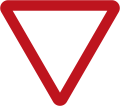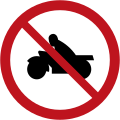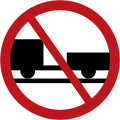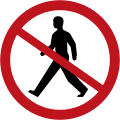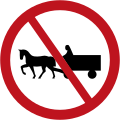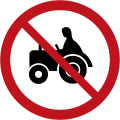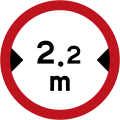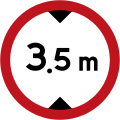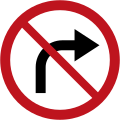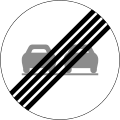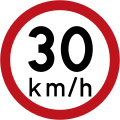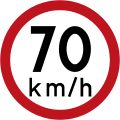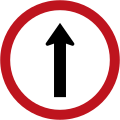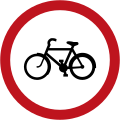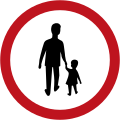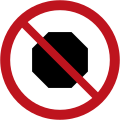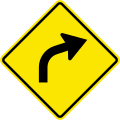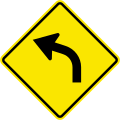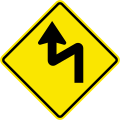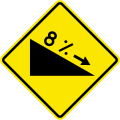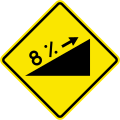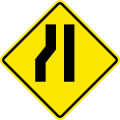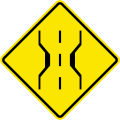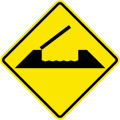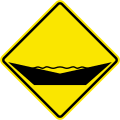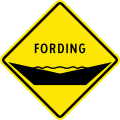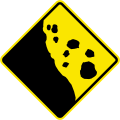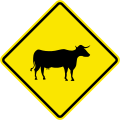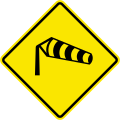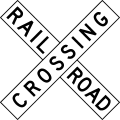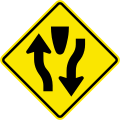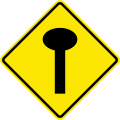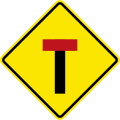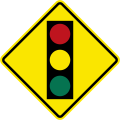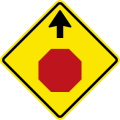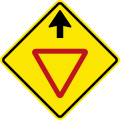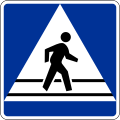
Road signs in Thailand are standardized road signs similar to those used in other nations but much of it resembles road signage systems used in South American countries with certain differences, such as using a blue circle instead of a red-bordered white circle to indicate mandatory actions. Until the early 1980s, Thailand closely followed American, European, Australian, and Japanese practices in road sign design, with diamond-shaped warning signs and circular restrictive signs to regulate traffic. The Department of Railway maintains a standard on the typeface used in the sign, with custom made type for Thai text, unofficially named "Thang Luang" (อักษรทางหลวง) and a small derivation of FHWA Series fonts typeface, which is used on American road signage, for Latin text. In most Bangkok Metropolitan Area's routes, TS Lopburi is still used.

In the United States, road signs are, for the most part, standardized by federal regulations, most notably in the Manual on Uniform Traffic Control Devices (MUTCD) and its companion volume the Standard Highway Signs (SHS).

Road signs in Israel are regulated by the Ministry of Transportation in the Division of Transportation Planning, most recently set forth in June 2011.

Road signs in South Korea are regulated by the Korean Road Traffic Authority.

Road signs in Greece are regulated by the Ministry of Transport and the Hellenic Traffic Police, according to the Greek Highway Code.

Road signs in the Czech Republic are regulated by the Ministry of Transport and the police. The signs are nearly the same as the European norm, but with small changes. The law governing the road signs is Decree number 30/2001 Sb., many times amended, and replaced by decree 294/2015 Sb., in force since 1 January 2016.

Road signs in Pakistan are modelled on the British road sign system, with an exceptional difference being that they are bilingual and contain messages in Urdu, the national language, and English, and in some cases, the local regional or provincial languages. Pakistan drives on the left side of the road and follows the left-hand traffic system. Vehicles must be overtaken on their right.
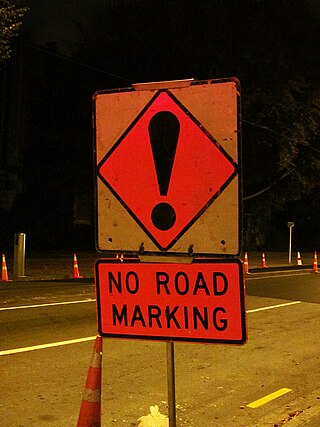
Road signs in New Zealand are similar to those set by the Vienna Convention on Road Signs and Signals. While New Zealand is not a signatory to the convention, its road signs are generally close in shape and function. New Zealand uses yellow diamond-shaped signs for warnings in common with Australia, the Americas, Ireland, Japan and Thailand. Speed limit signs are a red circle with a white background and the limitation in black, and are in kilometres per hour. There are also some signs unique to New Zealand. Road signs in New Zealand are controlled by NZ Transport Agency Waka Kotahi and are prescribed in the Land Transport Rule: Traffic Control Devices 2004 and set out in the Traffic Control Devices (TCD) Manual.

A wide variety of road signs are displayed in the People's Republic of China.
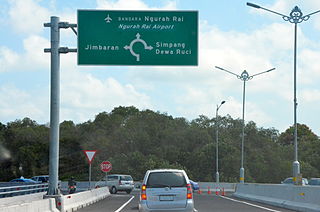
Road signs in Indonesia are standardized road signs similar to those used in other nations but with certain distinctions. As a former Dutch colony, until the 1970s road signs in Indonesia closely followed The Netherlands rules on road signs. Nowadays, Indonesian road sign design are a mix of European, US MUTCD, Australia, New Zealand and Japanese road sign features. According to the 2014 Minister of Transport's Regulation No. 13 concerning Traffic Signs, the official typeface for road signs in Indonesia is Clearview. Indonesia formerly used FHWA Series fonts as the designated typeface though the rules are not being implemented properly.

Road signs in Australia are regulated by each state's government, but are standardised overall throughout the country. In 1999, the National Transport Commission, or NTC, created the first set of Rules of the Road for Australia. Official road signs by standard must use the AS1744 series fonts, based on the US' Highway Gothic typeface.

Bosnia and Herzegovina is a signatory to the Vienna Convention on Road Signs and Signals. Therefore, road signs do not differ much from the rest of Europe, such as Croatia, Slovenia, Serbia and North Macedonia. Ministry of Transportation of Bosnia and Herzegovina regulates them. Bosnia and Herzegovina drives on the right as with the rest of Europe, except for Cyprus, Ireland, Malta and the United Kingdom. Bosnian and Herzegovinan road signs have two scripts, Latin and Cyrillic script.

Road signs in Cambodia are standardized road signs are similar to those used in Europe but much of it resembles road signage systems used in South American countries with certain differences. The designs of road signage match their neighbours of Thailand and Malaysia, both of which adopt a modified version of the South American road signage system. Until the early 1980s, Cambodia closely followed American, European, Australian, and Japanese practices in road sign design, with diamond-shaped warning signs and circular restrictive signs to regulate traffic. Unlike Thailand and Malaysia, Cambodia does not use the FHWA Series fonts typeface, favouring Helvetica instead.

Road signs in Azerbaijan are similar to the road sign system of post-Soviet states that ensure that transport vehicles move safely and orderly, as well as to inform the participants of traffic built-in graphic icons. They generally conform to the Vienna Convention on Road Traffic and Vienna Convention on Road Signs and Signals.
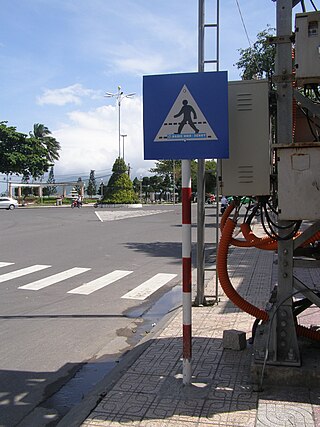
Road signs in Vietnam follow Chinese and French road signs. Some signs are written in both Vietnamese and English. The signs are prescribed by the Ministry of Transportation of Vietnam.

Road signs in Armenia are similar to the signs of other post-Soviet states and most European road sign systems. Armenia is a signatory of the Vienna Convention on Road Traffic and the Vienna Convention on Road Signs and Signals. The Ministry of Transport regulates these icons, while the police enforces them. Road signs ensure transport vehicles move safely and orderly, as well as, to inform both pedestrians and motorists of traffic rules.

Road signs in Portugal are governed by the "Regulamento de Sinalização do Trânsito" of the Republic of Portugal.

Road signs in the Republic of Bulgaria were introduced by the Road Traffic Act and are regulated by:

Road signs in South Africa are based on the SADC-Road Traffic Sign Manual, a document designed to harmonise traffic signs in member states of the Southern Africa Development Community. Most of these signs were in the preceding South African RTSM.
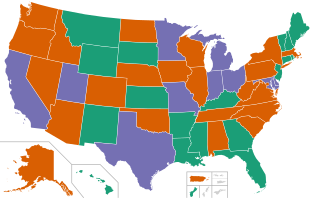
Road signs in Puerto Rico are regulated in the Manual de Rotulación para las Vías Públicas de Puerto Rico, Puerto Rico’s supplement to the Manual on Uniform Traffic Control Devices (MUTCD), the standard for road signs, signals, and markings in the United States. It is developed by the Puerto Rico Highways and Transportation Authority (PRHTA) "in substantial conformance to" the national MUTCD developed by the Federal Highway Administration.
